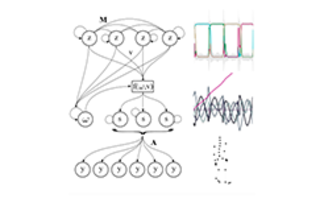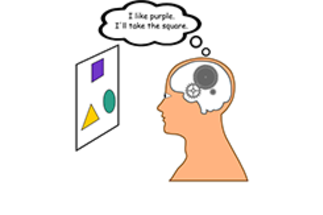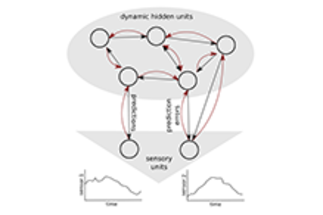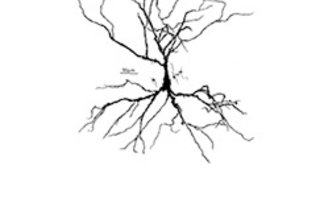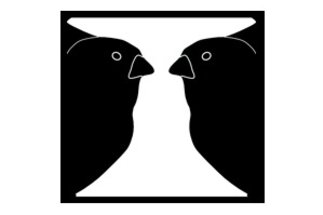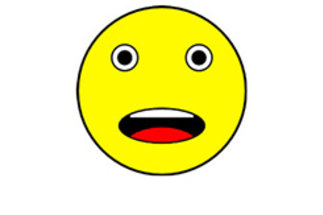Former Research Group Modelling of Dynamic Perception and Action
What we do
Our group develops (i) computational models for cognitive processes like decision making, and recognition and learning of complex spatiotemporal patterns, and (ii) neuronal models at several spatiotemporal scales, e.g. neural mass or single neuron models. For specific experimental neuroscience findings, we derive mathematical and functional mechanisms and aim at providing a mathematical framework for cognitive or neuronal processes.
Methods
As a modelling framework, we mostly use Bayesian online inference for nonlinear dynamical systems. Using variational inference schemes, we construct neurobiologically plausible systems that receive dynamical sensory input and can learn and recognize this input and act accordingly, in an online fashion. This enables us to model brain function as predictive and self-organising dynamics operating at multiple time-scales.
Areas of interest
We model phenomena in several neuroscience topics like perceptual and value-based decision making, auditory communication, multisensory integration and dendritic computation.
Experiments
We perform our own experiments but also collaborate with several experimental groups to develop cognitive and neuronal models. Experiments are typically done using functional magnetic resonance imaging, electro/magnetoencephalography, psychophysics, and calcium imaging.
Current projects
Collaborations
Karl Friston
Wellcome Trust Centre for Neuroimaging, London, UK.
Jean Daunizeau
Brain and Spine Institute (ICM), Paris, France.
Katharina von Kriegstein
Max Planck Institute for Cognitive and Neuroscience, Leipzig, Germany.
Felix Blankenburg
Bernstein Center for Computational Neuroscience, Berlin.
John O'Doherty
California Institute of Technology, Pasadena, California, USA.
Knut Holthoff
Universitätsklinikum Jena, Germany.
References
[1] Bitzer, S., Park, H., Blankenburg, F. & Kiebel, S. J. (2014) Perceptual decision making: Drift-diffusion model is equivalent to a Bayesian model Frontiers in Human Neuroscience, 8(102).
[2] Yildiz, I. B., von Kriegstein, K. & Kiebel, S. J. (2013) From birdsong to human speech recognition: bayesian inference on a hierarchy of nonlinear dynamical systems PLoS Comput Biol, 9(9), e1003219
[3] Bitzer, S. & Kiebel, S. J. (2012) Recognizing recurrent neural networks (rRNN): Bayesian inference for recurrent neural networks Biological Cybernetics, 106(4), 201-217
[4] Yildiz, I. B. & Kiebel, S. J. (2011) A hierarchical neuronal model for generation and online recognition of birdsongs PLoS Comput Biol, 7(12), e1002303
[5] Kiebel, S. J., von Kriegstein, K., Daunizeau, J., & Friston, K. J. (2009). Recognizing sequences of sequences PLoS Comp Biol, (5), e1000464.
[6] Kiebel, S. J., Daunizeau, J., & Friston, K. J. (2008). A hierarchy of time-scales and the brain PLoS Computational Biology, 4(11), e1000209.
[7] Kiebel, S. J., Daunizeau, J., & Friston, K. J. (2009). Perception and hierarchical dynamics Frontiers in Neuroinformatics, (3:20).
[8] Daunizeau J, den Ouden HEM, Pessiglione M, Kiebel SJ, Friston KJ, et al. Observing the Observer (II): Deciding When to Decide. PLoS ONE 5(12): e15555
[9] von Kriegstein K., Dogan O., Grüter M., Giraud A. L., Kell C. A., Grüter T., Kleinschmidt A., Kiebel S. J. (2008). Simulation of talking faces in the human brain improves auditory speech recognition Proc Natl Acad Sci U S A, 105(18):6747-52
